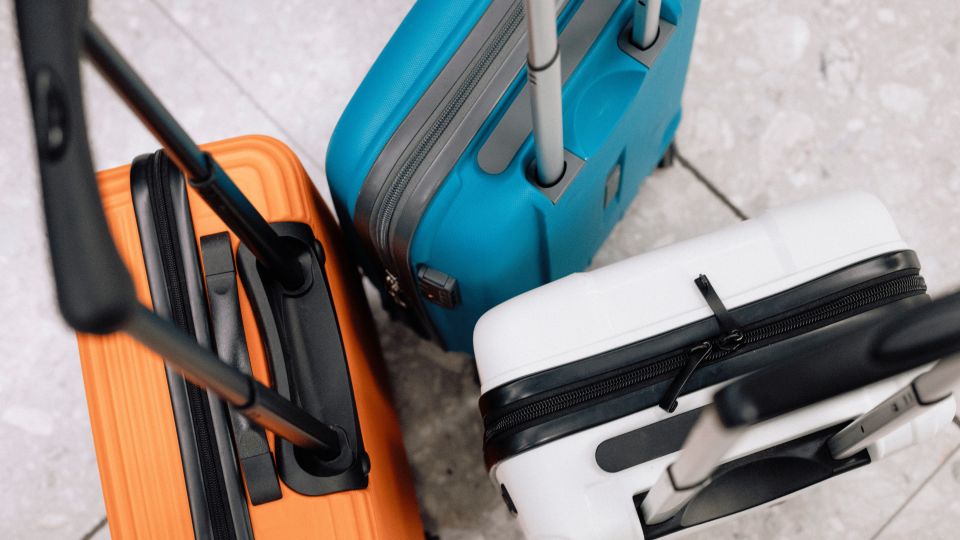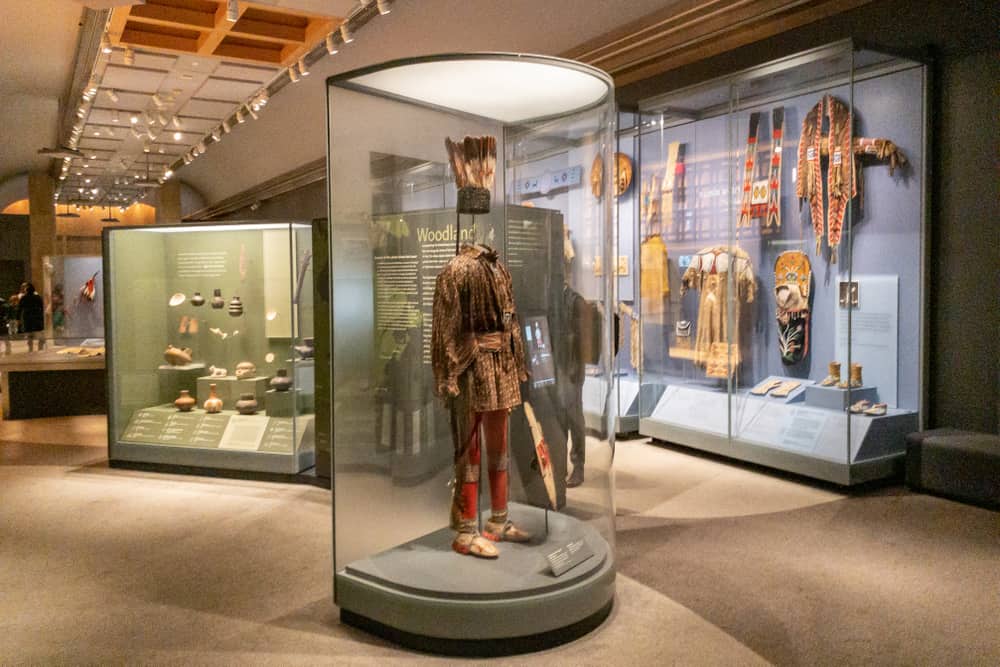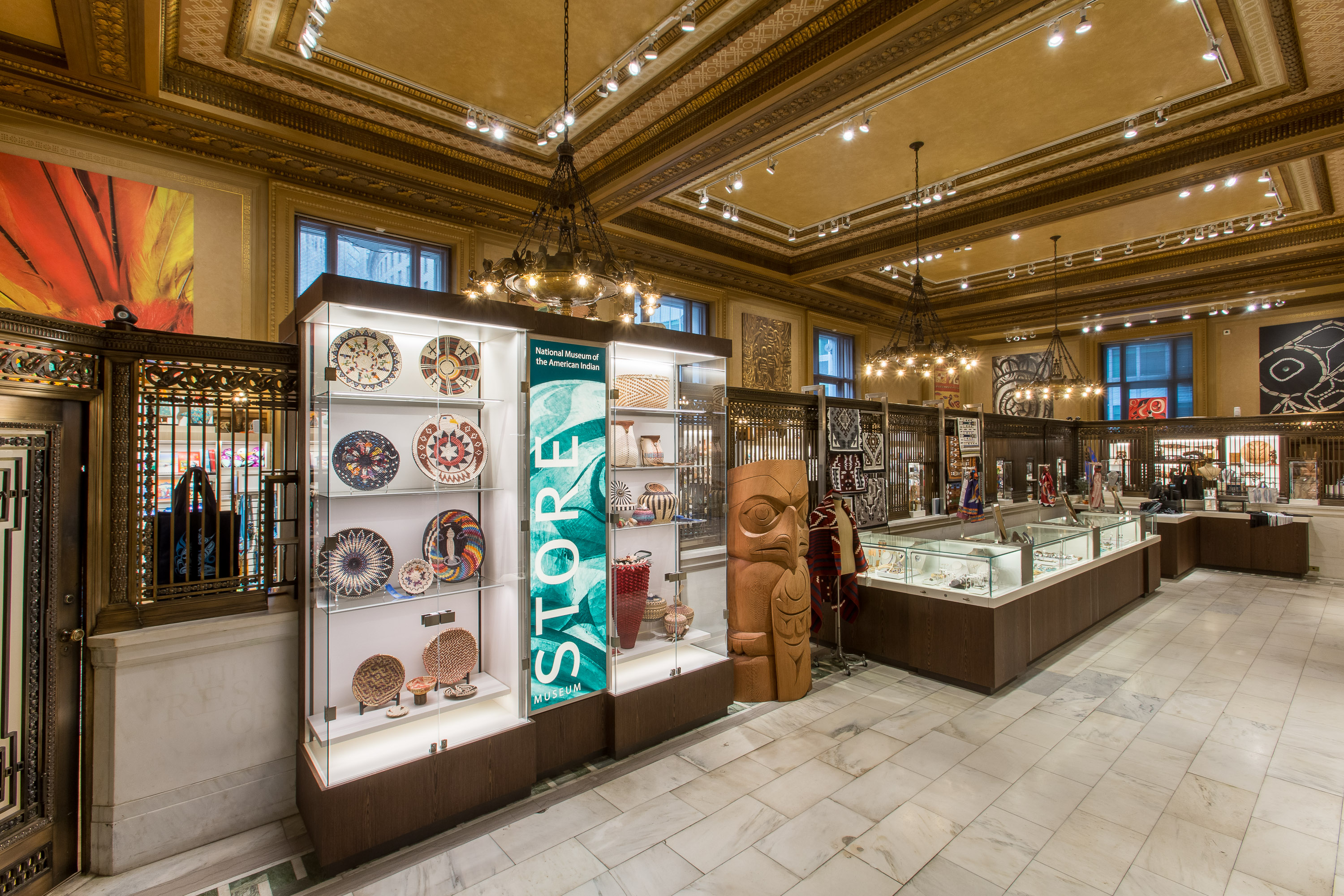
Luggage Storage Solutions at Native American Museums: A Comprehensive Guide for Visitors
Abstract
Visiting museums, particularly those dedicated to the rich and diverse cultures of Native American peoples, offers profound educational and spiritual experiences. However, navigating these cultural institutions, especially as a traveler, often presents the logistical challenge of managing luggage. This article provides an in-depth exploration of available luggage storage solutions at Native American museums, encompassing on-site facilities, off-site commercial services, and practical advice for visitors. It contextualizes these options within the unique operational and cultural considerations inherent to museums preserving Indigenous heritage, aiming to enhance visitor experience while upholding the integrity of the collections and exhibition spaces.
I. Introduction: The Nexus of Travel, Culture, and Logistics
The act of travel inherently involves carrying personal belongings, ranging from small daypacks to full-sized suitcases. When these items accompany visitors into museums, they can pose significant challenges to both the institution and the individual. For museums, large bags can be a security risk, an obstruction to visitor flow, and a potential hazard to delicate artifacts. For visitors, carrying cumbersome luggage detracts from the immersive experience, causing physical discomfort and mental distraction.

Native American museums, which range from expansive national institutions to smaller, community-run tribal cultural centers, present a unique set of considerations regarding luggage storage. These institutions are not merely repositories of objects; they are often vibrant centers for cultural revitalization, storytelling, and community engagement. As such, maintaining an environment of respect, contemplation, and unobstructed access is paramount. This article systematically details the various solutions available for luggage storage, offering a guide to optimize the museum visit.
II. On-Site Storage Options: Direct Museum Provisions
The most convenient and often preferred option for visitors is on-site storage provided directly by the museum. However, the availability and nature of these services vary significantly based on the museum’s size, funding, and operational policies.
A. Lockers
- Mechanism and Operation: Lockers are self-service storage units, typically located near the museum entrance or in a designated visitor services area. They operate via coin, token, or digital code systems, allowing visitors to secure their belongings independently. Sizes vary, from small compartments suitable for handbags and small backpacks to larger units capable of accommodating carry-on luggage.
- Advantages:
- Convenience: Located within the museum, eliminating the need to travel off-site.
- Security: Personal lock mechanisms provide a sense of individual control and security.
- Accessibility: Generally available during museum operating hours.

- Disadvantages:
- Limited Capacity: Lockers are finite; during peak hours, they may be fully occupied.
- Size Restrictions: Larger suitcases or oversized backpacks may not fit.
- Cost: While often nominal, there might be a fee for usage.
- No Climate Control: Belongings are subject to ambient temperature, which may be a concern for sensitive items.
- Specific Considerations for Native American Museums: Smaller tribal museums, due to budget and space constraints, are less likely to offer extensive locker facilities. Larger institutions like the National Museum of the American Indian (NMAI) in Washington D.C. and New York City, however, generally provide robust locker services. Visitors should always check the museum’s official website for specific dimensions, costs, and availability.
B. Coat Checks and Bag Drops (Manned Services)
- Mechanism and Operation: These are staffed facilities where visitors can check coats, bags, and sometimes larger luggage with an attendant. Upon checking, visitors receive a claim ticket, which is presented for retrieval. These services are typically located at the main entrance or visitor services desk.
- Advantages:
- Capacity for Larger Items: Often capable of accommodating items too large for lockers, such as full-sized suitcases, strollers, or umbrellas.
- Staffed Security: The presence of museum staff can offer a perceived higher level of security, particularly for items that might not fit securely in a locker.
- Personalized Service: Attendants can offer guidance and assistance.
- Disadvantages:
- Operating Hours: Services are strictly tied to museum operating hours and may close before the main exhibition areas.
- Queues: During busy periods, long lines can form for both drop-off and retrieval, consuming valuable visit time.
- Liability: While museums take reasonable care, their liability for lost or damaged items is often limited. Valuables should always be kept on one’s person.
- Cost: May be free, donation-based, or have a fixed fee.
- Specific Considerations for Native American Museums: Similar to lockers, the availability of staffed coat checks depends on the museum’s scale. Larger institutions with higher visitor traffic are more likely to offer this service. In smaller cultural centers, a designated, unstaffed area for coats and small bags might be the only option, emphasizing the need for visitors to keep valuables with them.
C. Designated Unmanned Areas
In some smaller Native American cultural centers or museums, particularly those with limited resources, a formal storage system may not exist. Instead, visitors might find designated, unmonitored areas (e.g., a coat rack, a corner in the lobby) where they can temporarily leave items.
- Advantages: Free and easily accessible.
- Disadvantages: Zero security. This option is highly discouraged for any item of value or importance. It is suitable only for items with no inherent value or those you are prepared to lose.
III. Off-Site Storage Alternatives: External Solutions for Travelers
When on-site options are unavailable or unsuitable, visitors must turn to external commercial services. These options require planning and may involve additional travel time to and from the museum.
A. Hotel Concierge or Bell Desk Services
- Mechanism and Operation: Most hotels offer luggage storage services for their guests, often extending this courtesy before check-in and after check-out. Guests simply leave their luggage with the hotel’s front desk or bell staff.
- Advantages:
- Convenience for Hotel Guests: Ideal if the museum is located near one’s accommodation.
- Generally Secure: Hotels typically have robust security protocols for guest belongings.
- Often Free: Usually included as part of the hotel stay, though tipping bell staff is customary.
- Disadvantages:
- Exclusivity: Generally only available to hotel guests.
- Location Dependent: Requires the hotel to be geographically convenient to the museum.
- Specific Considerations for Native American Museums: Many Native American museums are located in areas that may not be directly adjacent to a high concentration of hotels, especially if they are situated on tribal lands or in more rural settings. This might necessitate additional travel time.
B. Commercial Luggage Storage Services
- Mechanism and Operation: A growing network of third-party companies (e.g., Bounce, Nannybag, LuggageHero) partner with local businesses (shops, cafes, hotels) to offer short-term luggage storage. Users book and pay via an app or website, drop off their bags at a designated "storage point," and retrieve them later.
- Advantages:
- Widespread Availability: These services often have numerous locations, potentially closer to the museum than one’s hotel.
- Flexibility: Many partner locations offer extended hours, sometimes beyond standard museum times.
- Insurance: Most reputable services include insurance coverage for stored items.
- Variety of Sizes: Can often accommodate larger luggage.
- Disadvantages:
- Planning Required: Booking and locating a drop-off point require advance planning.
- Variable Reliability: The quality and security of partner locations can vary.
- Cost: Fees are typically hourly or daily, which can accumulate.
- Distance: The nearest drop-off point might still require a walk or public transport to the museum.
- Specific Considerations for Native American Museums: In urban areas with major Native American museums (e.g., NMAI in NYC, Heard Museum in Phoenix), these services are readily available. However, for museums in more remote or less commercially developed areas, commercial luggage storage might be scarce or non-existent.
C. Transportation Hubs (Airports, Train Stations, Bus Terminals)
- Mechanism and Operation: Major transportation hubs often provide lockers or staffed luggage storage services for travelers.
- Advantages:
- Convenient for Transit: Ideal for visitors arriving or departing on the same day as their museum visit.
- High Security: Facilities at airports and major train stations often have robust security protocols.
- Disadvantages:
- Distance: Transportation hubs are rarely adjacent to museums, requiring significant travel time and cost.
- Cost: Often among the most expensive storage options.
- Security Checks: Bags might be subject to security screening.
- Specific Considerations for Native American Museums: This option is generally only practical if the museum visit is directly integrated into arrival or departure plans, given the typical distance between hubs and cultural sites.
IV. Special Considerations for Native American Museums
The unique nature of Native American museums necessitates an approach to luggage storage that goes beyond mere logistics, incorporating cultural sensitivity and an understanding of institutional variability.
A. Variability in Scale and Resources
As previously noted, Native American museums range from large, federally funded institutions to smaller, tribally run cultural centers. The former often have the infrastructure for dedicated storage, while the latter may have extremely limited or no formal options. This variability means visitors must conduct advance research for each specific museum.
B. Cultural Sensitivity and Respect for Sacred Spaces
Many Native American museums feature exhibits that are deeply spiritual, sacred, or profoundly personal to the communities represented. Large, noisy, or cumbersome bags can disrupt the contemplative atmosphere, inadvertently block sightlines for other visitors, or even risk accidental contact with sensitive artifacts or displays. The act of entering these spaces with respect, unburdened by excessive personal items, aligns with the cultural reverence often associated with these institutions.
C. Remote Locations and Accessibility
Some Native American cultural centers are intentionally located on ancestral lands, which may be remote from urban centers. This can significantly limit the availability of off-site commercial storage options, placing a greater emphasis on the visitor’s ability to arrive with minimal luggage or utilize on-site facilities if available.
D. Exhibition Design and Visitor Flow
Exhibition spaces in Native American museums are often designed to tell complex stories, sometimes utilizing intimate settings or specific pathways. Large bags can impede the natural flow of visitors, create bottlenecks, or make it difficult to fully engage with certain displays, particularly those requiring close observation or interaction.
V. Best Practices for Visitors
To ensure a smooth and respectful visit to a Native American museum, visitors are encouraged to adopt the following best practices regarding luggage:
- Research in Advance: Always check the specific museum’s official website for their luggage policy, including information on lockers, coat checks, size restrictions, and fees.
- Pack Lightly: The most effective solution is to minimize the amount of luggage carried into the museum. Consider leaving larger bags at your accommodation or in your vehicle if secure.
- Utilize Personal Items Strategically: A small daypack or cross-body bag for essentials (wallet, phone, keys, water bottle) is generally acceptable and manageable.
- Secure Valuables: Irrespective of the storage method, always keep highly valuable items (passports, cash, credit cards, high-value electronics) on your person.
- Be Prepared for Alternatives: Have a backup plan in mind if your preferred storage option is unavailable (e.g., identifying nearby commercial storage or returning to your hotel).
- Respect Staff Guidance: Museum staff are there to ensure a safe and enjoyable experience for all. Adhere to their instructions regarding bag size, storage, and conduct within the exhibition spaces.
VI. Conclusion
Navigating luggage storage at Native American museums requires a blend of logistical planning, awareness of available services, and a deep appreciation for the cultural significance of these institutions. By understanding the various on-site and off-site options, coupled with best practices for visitors, individuals can ensure a comfortable, respectful, and enriching experience. The ultimate goal is to remove the burden of cumbersome belongings, allowing visitors to fully immerse themselves in the powerful narratives, artistry, and heritage preserved within these vital cultural spaces, fostering a deeper connection with Native American cultures and histories.


